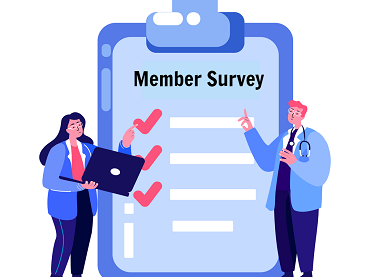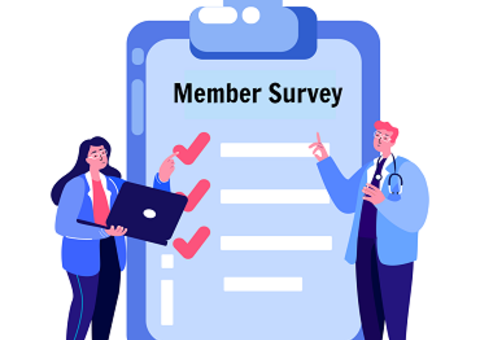Blog
The Dos and Don’ts of Bank & Fintech Partnerships

A virtual roundtable summary.
COVID-19 has created new challenges, which require new solutions and strategic partnerships between FinTech companies, Banks, and Non-Banks. The latest report from the World Economic Forum’s Future of Financial Services series explores how the intersections of emerging technologies like AI, DLT, cloud, and IOT are tearing down traditional barriers between financial and non-financial firms – making the ability to assemble new capabilities crucial to competitive differentiation and building resilience post-COVID-19. See the report here.
As part of a virtual roundtable series on COVID-19 mitigation efforts, the SME Finance Forum hosted a virtual roundtable with Kelvin Teo (Funding Societes), Adrian Gunadi (Investree), Arvie De Vera (UnionBank), and Mohamed Wefati (MIZA) ), moderated by Lesly Goh (World Bank Group), to talk about how innovative digital solutions and successful partnerships are changing the lending landscape around the world.
The session kicked off with the panelists expressing their views on what are the key factors for a successful partnership. Kelvin Teo shared his learnings from Funding Societies’ initial partnership with a Southeast Asian Bank. Firstly, it is important to have a key executive sponsor who maintains and sustains the partnership. Secondly, it is not just important to build alliances and trust-based relationships with the sponsor but to build a network of collaborations to reduce dependency on an individual stakeholder. Lastly, define clearly what solutions the partnerships can provide. To this point, Arvie added his experience from a banking perspective. Often, enterprises jump on the bandwagon and experiment with fintechs without knowing how the partnership would benefit mutual goals. This falls through as the enterprise experiences a crisis or conflict, and invariably unhinges the partnership. According to Arvie, the expectations need to be defined at all levels of the organization; the KPIs, value proposition, and potential revenue from the business model should be clearly stated for a successful partnership.
Additionally, Adrian addressed the importance of “endurance” to build relationships. When Investree started working with BRI (Bank Rakyat Indonesia), one of the biggest SOE banks in Indonesia, they started with small goals. They highlighted what they bring to the table (E.g.: a portfolio of SMEs that the bank did not currently have) and with time expanded to other solutions (credit scoring, digital invoicing) to support their ecosystem. Investree realized that access to finance was not the only problem SMEs were facing. Bookkeeping, scale, connecting with enterprises, and developing an efficient invoice system are some others, to name a few. To empower SMEs, they further built joint venture partnerships to bring in accounting, digital invoicing, and procurement expertise and rolled these beyond financing services within their ecosystem.
Mohamed shared his observations of the Middle Eastern North Africa (MENA) market during COVID. He believes partnering with smaller banks is often a great idea to build intimate relationships and prove the worthiness of your solutions. Another suggested approach is to work with development banks and DFIs to build credibility and visibility, despite the bureaucracy and channels you need to go through. He also shared his views on hackathons and the disconnect between the agenda of the innovation teams and the commercial decisions made by business head of SME banking. Although hackathons are important to build confidence in the solution offered, it may not always translate to building relationships with the key decision makers to go beyond Proof of Concepts (POCs) to fully launch the solutions. Lastly, timing plays an important role in building synergies and partnerships. Often, a pitch and solution can be perfect but if the timing is off, it often falls through.
When the pandemic hit economies, fintechs were among the few organizations that were fully functional. Banks naturally turned to them to start partnerships. However, most partnerships take years to build as processes and details need to be defined. Without that sound foundation, it is often difficult to create innovative business models and strategic direction. To address this, Adrian who is also the Chairman of AFPI (a self-regulating organization for Indonesia FinTech Lending Association) forged working group discussion at the association level with regulators to streamline policies within banking to work closely with fintech platforms. Fintech is viewed as a means to promote financial inclusion and help regulators accelerate innovation. AML, data security, customer protection are some of the key policy issues that regulators look at. In a lot of cases, if you’re clear about the value proposition you’re offering to the economy, regulators are more receptive to the solution.
Lastly, the speakers addressed the importance of finding the right talent to lead their initiatives forward and how early investment in the right team and partnerships can result in long-term success. The pandemic has pushed the envelope and steered organizations to focus on their core competencies. Banks have advocated for a digital future for a few years now, but the pandemic has accelerated the process and heightened the need for digital financial solutions.








